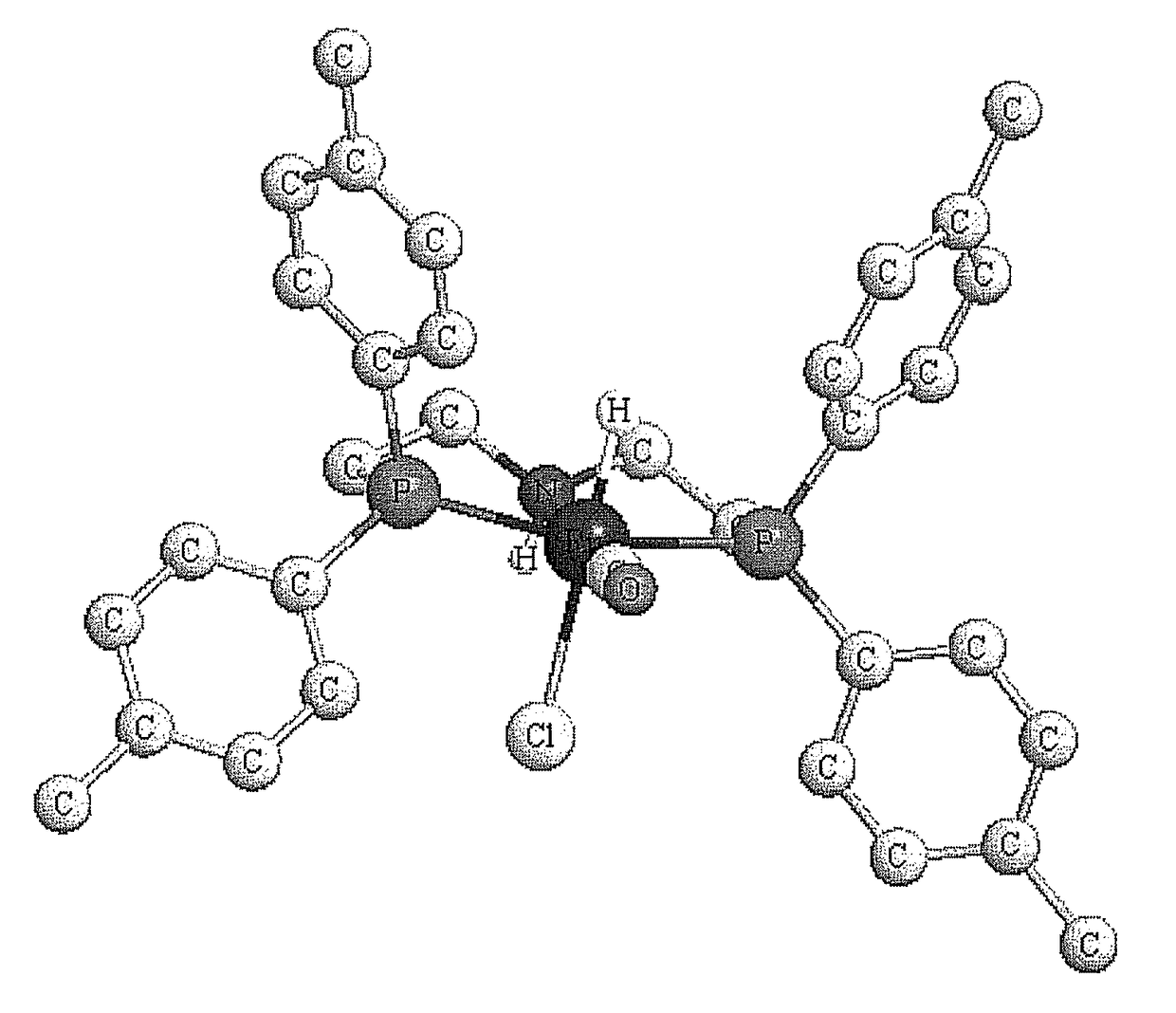Ruthenium carbonyl complex having tridentate ligand, its production method and use
a technology of ruthenium carbonyl complex and tridentate ligand, which is applied in the preparation of amino compounds, group 3/13 element organic compounds, ruthenium organic compounds, etc., can solve the problems of complex synthesis at low temperature, difficult industrial application, and lack of carbonyl ligand, etc., to achieve high stability, easy preparation, and good handling
- Summary
- Abstract
- Description
- Claims
- Application Information
AI Technical Summary
Benefits of technology
Problems solved by technology
Method used
Image
Examples
example 1
[0183]According to the following reaction scheme, the ruthenium carbonyl complex 1a and 1b were produced.
[0184]
[0185]Under a nitrogen stream, the amine hydrochloride 8 (4.18 mmol) was added to a 100 mL flask and suspended in toluene (33 mL). After adding 15% aqueous NaOH solution (14 mL), it was stirred at room temperature until the solids disappear. After the fractionation of the solution, the organic layer was washed with distilled water (14 mL×2) and the aqueous layer was extracted with toluene (14 mL×2). The combined organic layer was dried over sodium sulfate and the solvent was removed by distillation to obtain the amine 9.
[0186]The ruthenium carbonyl complex 7 (4.18 mmol) was added to a 200 mL flask, purged with nitrogen gas, and added with the amine 9 dissolved in toluene (33 mL). The mixture was refluxed with heating for 60 min. After cooling, hexane (82 mL) was added to the reaction solution and the crystals precipitated under the nitrogen atmosphere were filtered. The cry...
example 2
[0193]Hydrogenation of methyl(R)-lactate was carried out according to the following reaction scheme.
[0194]
[0195]A solution of methyl(R)-lactate (10 mmol) having optical purity of 99.3% ee, the complex 1a (0.01 mmol) produced in Example 1, methanol (7.6 mL), and 0.5 M of sodium methoxide in methanol (0.4 mL) was added to a 100 mL autoclave equipped with a stirrer, and the hydrogenation-reduction was carried out at 30° C. for 16 hrs with hydrogen pressure of 5 MPa. As a result of the analysis of the reaction solution according to gas chromatography, the conversion rate was 96.3%. Optical purity of the alcohol obtained was 99.1% ee.
example 3
[0196]Hydrogenation of methyl L-Boc-alanine ester was carried out according to the following reaction scheme.
[0197]
[0198]Methyl L-Boc-alanine ester (5 mmol), the complex 1b (0.01 mmol) produced in Example 1, and tetrahydrofuran (4 mL) were added to a 100 mL autoclave equipped with a stirrer, and the hydrogenation was carried out at 80° C. for 16 hrs with hydrogen pressure of 5 MPa. As a result of the analysis of the reaction solution according to gas chromatography, it was found that (S)-2-(Boc-amino)propan-1-ol was produced with the conversion rate of 100% and the selectivity of 100%. Optical purity of the alcohol obtained was 99% ee or higher.
PUM
| Property | Measurement | Unit |
|---|---|---|
| temperature | aaaaa | aaaaa |
| temperature | aaaaa | aaaaa |
| temperature | aaaaa | aaaaa |
Abstract
Description
Claims
Application Information
 Login to View More
Login to View More - R&D
- Intellectual Property
- Life Sciences
- Materials
- Tech Scout
- Unparalleled Data Quality
- Higher Quality Content
- 60% Fewer Hallucinations
Browse by: Latest US Patents, China's latest patents, Technical Efficacy Thesaurus, Application Domain, Technology Topic, Popular Technical Reports.
© 2025 PatSnap. All rights reserved.Legal|Privacy policy|Modern Slavery Act Transparency Statement|Sitemap|About US| Contact US: help@patsnap.com



